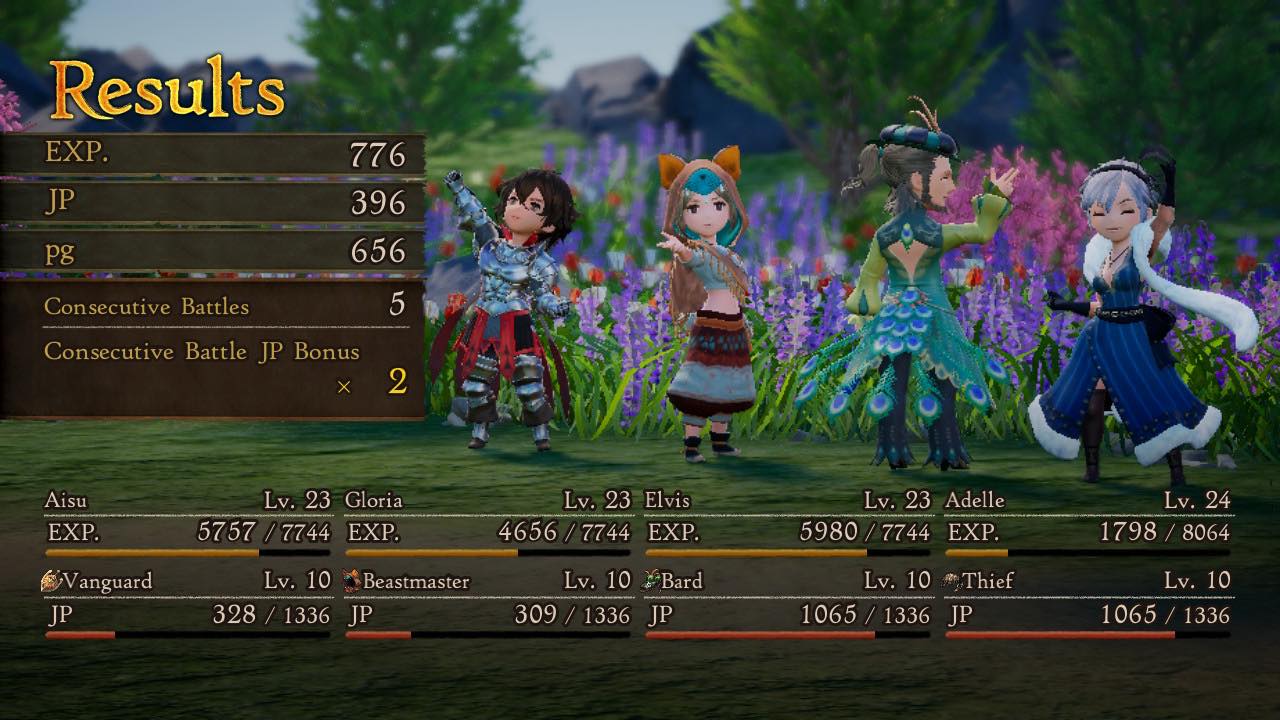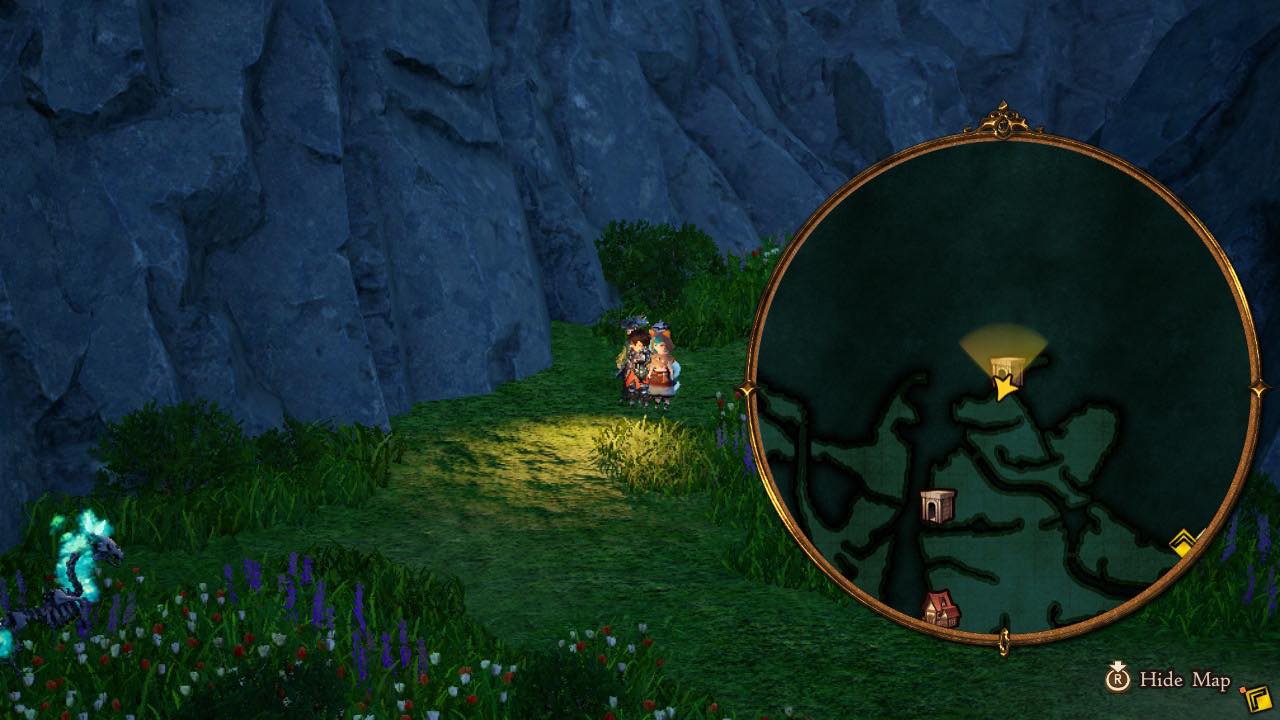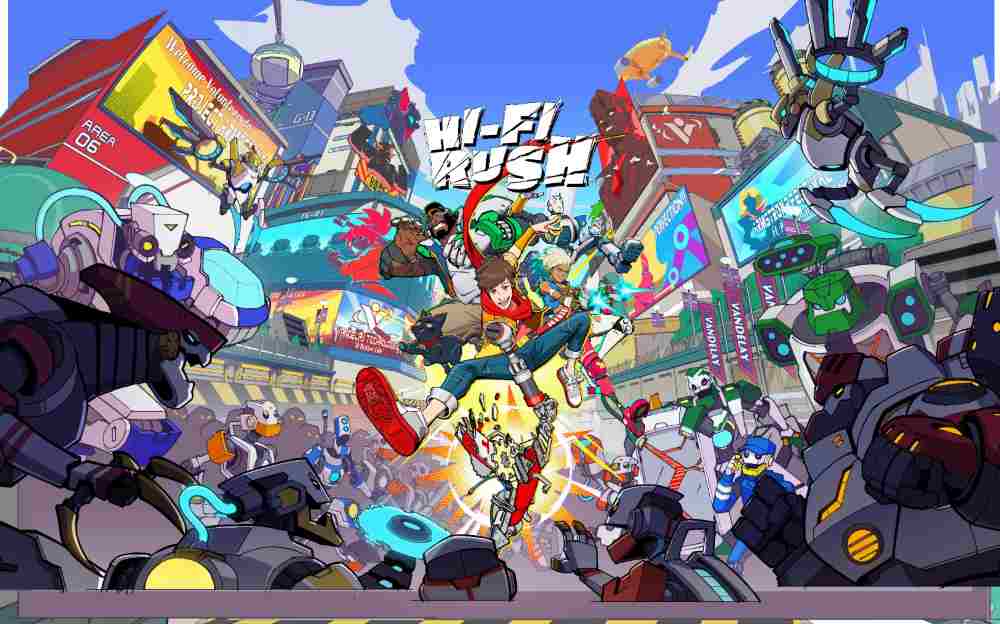Review: Bravely Default II – Safe yet satisfying
Bravely Default II, weirdly, is the third game in the “Bravely” series. The first game, Bravely Default, was released on the 3DS back in 2014 followed by Bravely Second: End Layer in 2016. Despite its name, BDII isn’t actually a sequel nor is it even a prequel, so Switch owners looking for a JRPG to play that doesn’t require any prior immersion into the franchise will be glad to know that they can immediately jump into this latest entry.
With so many other RPG’s trying out a lot of different mechanics and features, BDII sticks to its default (heh) – a tried and tested combat and job system that is also seen in a recent Switch entry, Octopath Traveler. BDII doesn’t do anything radical nor does it reinvent the wheel, instead it offers a safe and familiar experience anchored on solid JRPG foundations that series veterans and even newcomers will fully appreciate.
Square loves Crystals
BDII tells a rather familiar story – You are Seth, a shipwrecked survivor that soon meets Gloria, the former princess of the ruined Kingdom of Musa. Musa was once the home of the 4 Crystals that gave balance to the world but now, have been lost. I won’t even have to continue for you to actually guess how it goes, but to answer your question, yes they go on a grand quest to find the missing crystals and along that journey, meet Elvis and Adelle, whose motivations are in tangent to your mission.
Square isn’t shy about its trademark tropes for BDII – You and your party are the heroes of light, you’re fending off evildoers who seek the power of the crystals, there’s a big bad villain with powerful generals… it really couldn’t be any more cliche, so don’t expect a mind-bending storyline because for the most part BDII is a straightforward experience that is neither deep nor complicated. There are a few twists and turns towards the end that may merit a few “ohh’s” from the player, but some of these twists can be seen coming from a mile away if you’ve been paying close attention.
Actually, if you’ve played the previous entries, you’ll be faced with familiar “events” down the line. We won’t spoil them for you, of course.

The 4 main characters in BDII aren’t the most well-written, and certainly not as memorable as the Tiz-Agnes-Ringabel-Edea party from the previous games. Each of the characters from BDII look rather generic – Seth (the protagonist) just looks really your regular joe while Gloria reminds you of a run-of-the-mill princess that really doesn’t stand out. We won’t even talk about Elvis, who has an unhealthy relationship with the word “wee”. If there’s anyone in the main cast of characters that particularly stands out, that would be Adelle, both in terms of design and personality.
Their English voice acting cast provides a good performance, but their Japanese counterparts are clearly a cut above. This quartet may not stand out, but they have just enough charm and character to be serviceable heroes throughout the game.
Despite all of this, BDII looks fantastic on the Switch. The world and all its characters are vibrant and colorful, and the visuals will remind you of painted artworks brought to life. From the characters to the overworld and even to the various cities you will be visiting (some of which are wonderfully designed, like Rimedahl), it is very easy to fall in love with the soft yet inviting art style of the game. If anything, this is a strong selling point that works well with its overall tone and direction. I understand that for some, this sort of chibi character style could be a turn-off, but my RPG roots dating back to the 90’s have such a strong influence on me that I appreciate, and sometimes even prefer, this style over the more recent realistic looking offerings.

The main attraction though is the Job and Brave / Default system, both of which are fantastic systems that can rival any of the best that features that JRPG’s can offer.
To Brave or not to Brave
For the newcomers, Bravely Default II employs a rather standard turn-based combat system, where each character and enemy in the battlefield take turns putting out an action. The icing on this cake is the “Brave” and “Default” system, which allows players to stock up on actions, offering a layer of strategy that is easy to learn yet hard to fully master.
By choosing Brave, you can perform up to 4 actions that you can do during a fight. Want to attack the enemy 4 times? Cast 4 spells? Revive a fallen comrade, use a Potion, and attack an enemy all in one turn? By using up your Brave, your BP (Brave Point) dips into the negative, and you’ll have to wait until it hits zero again before you can perform any moves, leaving your character defenseless while waiting.
Choosing Default allows your character to defend incoming attacks, but also gaining a BP in the process. You can stack up to 3 BP’s this way, and doing so will let you perform multiple Brave attacks without going below zero.
Your success in combat will revolve around the understanding and mastery of these 2 concepts, and the results are very satisfying once you learn how to use (and abuse) the system. The enemies will also use both Brave and Default, meaning you’ll have to keep your wits about you to counter as needed.

Jobs, on the other hand, are the classes in the game. True to the series, you can choose to equip your character with any combination of 1 main and 1 sub-job, which allow for extreme levels of customization that will eventually lead to some downright broken combinations that can obliterate enemies and bosses in a few turns.
Each Job has various active and passive abilities that, once learned through the accumulation of JP (Job Points, which you gain in battle), you can equip to gain special effects. As you can already guess, the main draw of the game is how well you can combine certain abilities to give your crew an edge during battles. Your Black Mage having trouble casting spells? Get the MP Saver ability from the Beastmaster Job to lower the cost of your spells. How about combining your White Mage Job with the Spiritmaster so that you can cast party-wide regen and reraise spells? These are just a few examples of the many combos you can do, and you are only really limited by your imagination. Towards the end of the game, especially when you are out hunting the secret bosses and enemies, the combinations get so crazy that you’ll even wonder how big-brained some of the combos really are, proving that every job in the game is viable with the right setup.
These 2 systems are really the standout features in Bravely Default II, and while they do not offer anything new coming from Bravely Default and Bravely Second, it is very well-thought of and offers players surprising results should they choose to take full advantage of it.
If all of this sounds like something that you would appreciate, then Bravely Default II should be more than enough to satisfy your appetite.
A grinding we will go
Grinding is a staple JRPG mechanic that isn’t lost in BDII. In fact, grinding in this game is practically a must, since some bosses will prove to be tough damage checks that will beat you down if you come unprepared.
During the natural progression of the story, there doesn’t seem to be a setup that can beat everybody, so you’ll have to welcome the grind and adjust as necessary. Against a tough boss that punishes your melee-based party with physical attack counters? Back to the drawing board for you, my friend, and dust off those Black Mage robes to bring some elemental hurt. This cycle is both humbling and equally as satisfying once you figure out a way to beat that troublesome roadblock because I kid you not, almost all bosses here are tough as shit and will require you to execute and stick to a gameplan.

Thankfully, because of a number of quality of life upgrades in the game, the grind is something you might even look forward to. You can choose to run the game at a faster pace during battles (up to 4x), and BDII employs a “consecutive battles” mechanic that gives you a multiplier depending on how many enemies you take on at the same time. Overworld battles aren’t random, rather they are akin to something more like Dragon Quest XI, where you see the monsters roaming around and it is your choice whether you want to engage or not. BDII also has the broken Freelancer job (your starting job), which gives you 2 abilities that essentially double your JP income rate, allowing you to master jobs in no time.
*If in case the grind proves to be too much for you, here’s a great guide on how to make the JP rain.
Default in our stars
Throughout my 55 hour playthrough, which includes mastering all available jobs and getting the true ending, there are indeed some small things that really could have been done better.
There are a lot of side quests are available in game, but sadly most of them are just fetch quests that don’t always offer any meaningful reward unless they require you to beat a monster, which in that case will reward you with something useful like a good weapon or piece of armor. There’s a card game (of course there is) mini-game called BnD or Bind and Divide which is suitable for players looking for a distraction from the grinding. It’s not a top-tier time waster like Gwent, but is challenging enough to spend a few hours on.
Dungeons in the game are generally unremarkable, with the only variations being the number of dead ends and chests you can acquire. Exploration is encouraged though, as some of these chests will offer a good items that is usually better than what you currently have equipped and is sometimes useful for the upcoming boss, so it pays to stray off the beaten path.

The option to increase the map size is a good feature, but is implemented in such a weird manner that the game doesn’t allow you to adjust its opacity, resulting in half your screen being covered by this huge map that is unelegant and simply mind-boggling.
That said, Bravely Default II offers meaty endgame content, giving you a number of optional bosses and dungeons to fight that will not only test your skill but your patience as well. These are the hardest challenges in the game, and if you thought you’ve already made the ultimate party composition, you’ll want to think again.
What we liked:
- Brave / Default and Job system is a top tier RPG feature
- Quality of life upgrades that make grinding less of a chore
- While not for everyone, the art style of the game is beautiful
- A ton of optional endgame content even after you’ve finished the game
What we didn’t like:
- Generic storyline
- Forgettable cast of characters
- Side quests are not enticing to do
Verdict: Buy it!

Overall, despite of its cliche tropes and the lack of any big new feature to separate it from its predecessors, Bravely Default II is a game worth getting due to its solid and sound JRPG foundations that provide a satisfying experience for fans of the series and of the genre. The basic turn-based battle system is elevated so much by the Brave / Default and Job features that really carry this game from being just another JRPG.
True to its history, Bravely Default II offers players around 40-50 hours worth of gameplay without even considering the endgame, which can easily double your playtime if you choose to engage in all of the optional and secret content that the game has to offer. It’s a ton of content, which alone makes the game worthwhile.
*Bravely Default II was reviewed on a Nintendo Switch V2 via a review code provided by the publisher.




